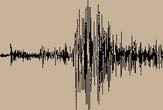
The three major tectonic plates off the Pacific Northwest are shifting, and the site of their convergence is migrating in a southeasterly direction, scientists say.
But there's no need to duck beneath a doorframe or run for the nearest open clearing just yet, because the shift is gradual and part of a process that's been going on for millions of years. In fact, the shift may indicate a slight mellowing of the danger for residents in the quake-prone area.
Scientists are only now beginning to get a clearer picture of what goes on in this region—popularly known as the "Triple Junction"—thanks to advances in technology and the declassification of data from U.S. Navy hydrophones.
A new study, led by Robert Dziak of Oregon State University, is detailed in the latest issue of the journal Geology.
The researchers are learning more about the underlying geology of the region and could change how they think about such things as seafloor spreading, undersea volcanoes and earthquakes.
The Triple Junction is where the Juan de Fuca plate, the North American plate and the Pacific plate converge in an area off the Pacific Northwest coast from Oregon to Vancouver Island. Studies show the region has produced utterly catastrophic magnitude 9.0 quakes in the past and that another big one is due.
But the junction's newfound reorganization could indicate that the "subduction," or sinking under, of the Juan de Fuca plate beneath the North American Plate is slowing down or eventually cease all together, the researchers say.
Sign up for the Live Science daily newsletter now
Get the world’s most fascinating discoveries delivered straight to your inbox.
"In many ways, it's becoming more like the San Andreas Fault to the south, where the earthquake danger comes from strike-slip events, rather than a subduction quake," Dziak said.
Unlike subductions, slips are when two tectonic plates slide past one another. This slow grinding can generate tremors and earthquakes.
The Triple Junction's transition from a subduction zone to one of slips could reduce the chances that huge earthquakes of magnitude 9.0 or higher will occur in the region, Dziak said.
"That doesn't mean the Northwest isn't susceptible to a major earthquake," he added. "But it could indicate that such an earthquake may be more in the magnitude of 7 or 8 instead of larger."
- Gallery: The 1906 Earthquake
- Quiz: 100 Years After the Great 1906 Quake
- Wild and Wacky Tales from the 1906 Quake
- Watch Earth Rock and Roll in New Simulation of 1906 Quake
- Crumbled Tombstones Lead to New View of 1906 Earthquake
- Mystery Vibrations Detected Inside Earth
- Gallery: Other Deadly Earthquakes









